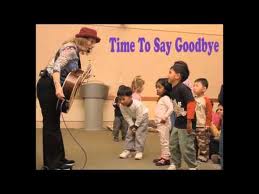 Welcome to O.D. Fridays at DonorDreams blog. Every Friday for the foreseeable future we will be looking more closely at a recent post from John Greco’s blog called “johnponders ~ about life at work, mostly” and applying his organizational development messages to the non-profit community.
Welcome to O.D. Fridays at DonorDreams blog. Every Friday for the foreseeable future we will be looking more closely at a recent post from John Greco’s blog called “johnponders ~ about life at work, mostly” and applying his organizational development messages to the non-profit community.
Today, I am focusing on a post that John wrote about attribution theory and contingency theory based upon a “classroom song” story that a friend shared with him over a fierce game of Scrabble. After reading his post, a song jumped into my head from my days at Grace Pre-School in Mount Prospect, Illinois. It goes something like this:
“Grace Pre-School is over and its time for us to go home;
Goodbye, goodbye;
Be always kind and good;
Goodbye, goodbye;
Be always kind and good.”
That was the song we sang at the end of the day when it was time to pack-up and go home. I can’t believe how four decades later that song sprung into my head as conveniently as if I had just sung it yesterday.
At the ripe old age of four, that pre-school song helped me bring the school day to a close. It reminded me to put my toys away, say goodbye to my friends, get my coat and bag, find my Mom, and leave the building without shedding a tear. It only worked within the confines of the church that housed my pre-school program. It didn’t result in me being “kind and good” . . . you can ask my Mom and she’ll tell you that I could be a terror on certain days.
To think that singing my pre-school — anywhere and anytime — would yield the same results or “cause” me to be “kind and good” is quite simply misattribution.
In the non-profit fundraising world, we do this all the time with donors and it goes something like this:
- Contribution comes into the office,
- The contribution is entered into the donor database,
- The computer generates a thank you letter that is sent to the donor,
- The donor gets added to a newsletter mailing list, and they receive a few newsletters,
- Another solicitation is made that results in another contribution.
Cha-ching! The donor is conditioned. The money rolls in. It is oh so simple. I can almost hear fundraising professionals singing a song that goes something like this:
[youtube=http://www.youtube.com/watch?v=Wq3tVrTFcKk]
Cause and effect is such a great thing until you realize that you’ve attributed the wrong stimulus to the wrong results.
Penelope Burk, CEO of Cygnus Applied Research, does a great job in this interview with The Chronicle of Philanthropy of debunking the myths associated with singing the donor song. She points to research illustrating how the average non-profit loses 50% of donors somewhere between their first and second contribution to their agency.
Huh? I wonder if those fundraising professionals mistakenly sang my pre-school “goodbye song” to their donors instead of the “money song”. LOL
All kidding aside, Burk is the queen of “Donor-Centered Fundraising” which tells us that cookie cutter approaches to donor stewardship result in high turnover rates. Donors stop donating because they feel “over-solicited”. Many fundraising professionals hear this and think that fewer solicitations are the remedy. This conclusion is simply not true. Burk does a great job of explaining the subtle nuances behind “over-solicitation” in The Chronicle of Philanthropy interview:
“. . . over-solicitation is not a frequency of asks in a set period of time; rather, it is being asked to give again before donors are satisfied about what happened with their last gift.”
- Every donor is like a snowflake — they’re different.
- Everyone has a different threshold for what they need to see in order to be satisfied about what happened with their last gift.
- No one responds to the same stewardship activities the same way.
When Burk talks about being “donor-centered,” she is really saying that we need to get to know our donors individually. We need to craft stewardship strategies around donors’ needs and preferences in order to avoid “over-solicitation”.
Am I hearing some of you mutter words like “crazy” and “impossible“? If so, then I encourage you to dwell and explore the following ideas:
- database contact records
- segmentation
- surveys
- discussions
- focus groups
- stewardship plan
 My parting advice to you is stop misattributing the “money song” to securing donations because you are losing half of your donors after their first contribution and 90% by the fifth gift. Read up on the concepts of “Attribution Theory” and “Contingency Theory” and stop singing the “Goodbye song” to your donors.
My parting advice to you is stop misattributing the “money song” to securing donations because you are losing half of your donors after their first contribution and 90% by the fifth gift. Read up on the concepts of “Attribution Theory” and “Contingency Theory” and stop singing the “Goodbye song” to your donors.
How does your non-profit organization customize its stewardship activities to individual donors? Do you just do so for your major gift prospects? Where do you store your individualized stewardship plans? What role does your donor database play in managing your Moves Management program? Can you share your success results? Did your donor loyalty rate improve?
Here’s to your health!
Erik Anderson
Founder & President, The Healthy Non-Profit LLC
www.thehealthynonprofit.com
erik@thehealthynonprofit.com
http://twitter.com/#!/eanderson847
http://www.facebook.com/eanderson847
http://www.linkedin.com/in/erikanderson847

